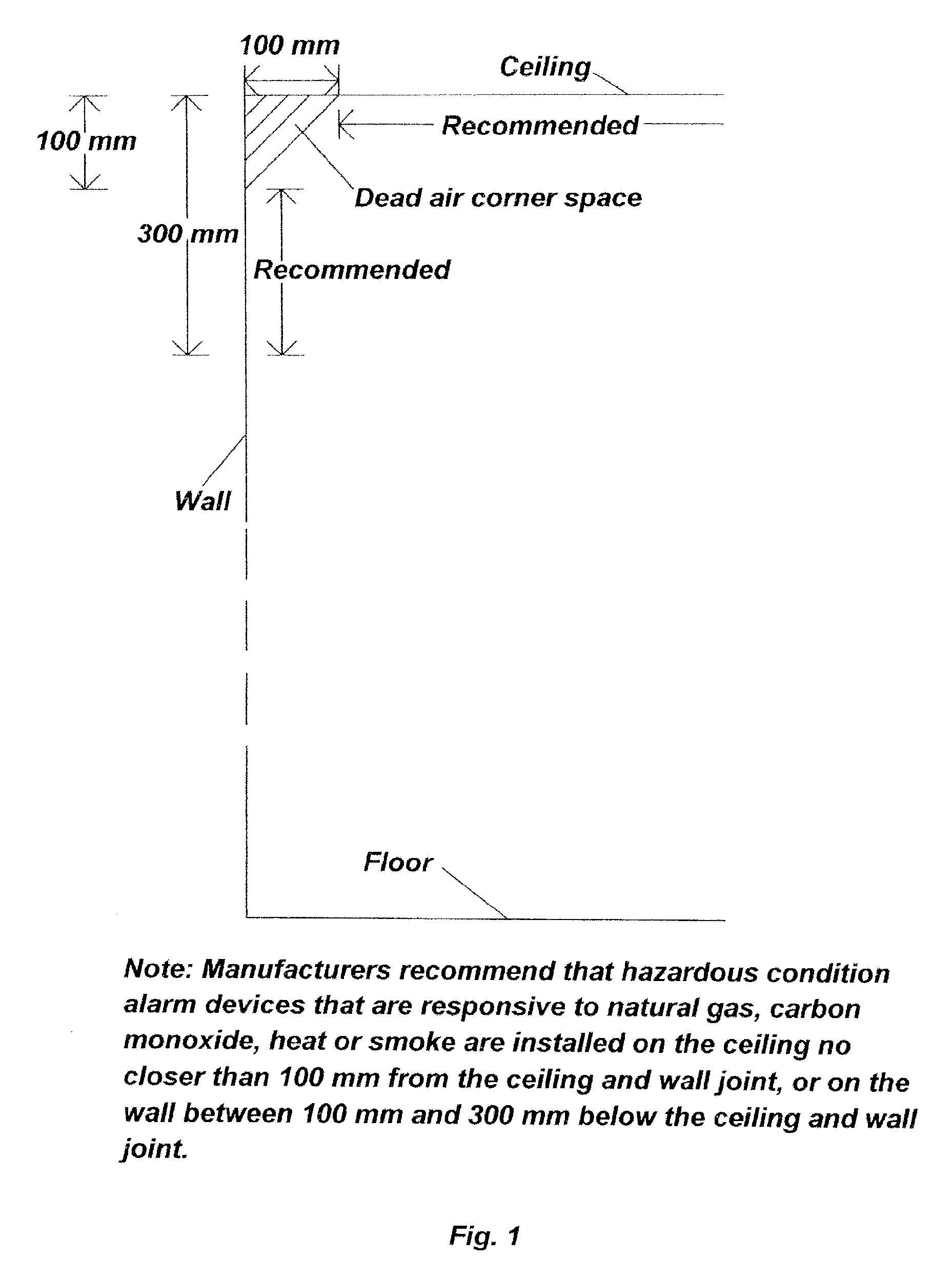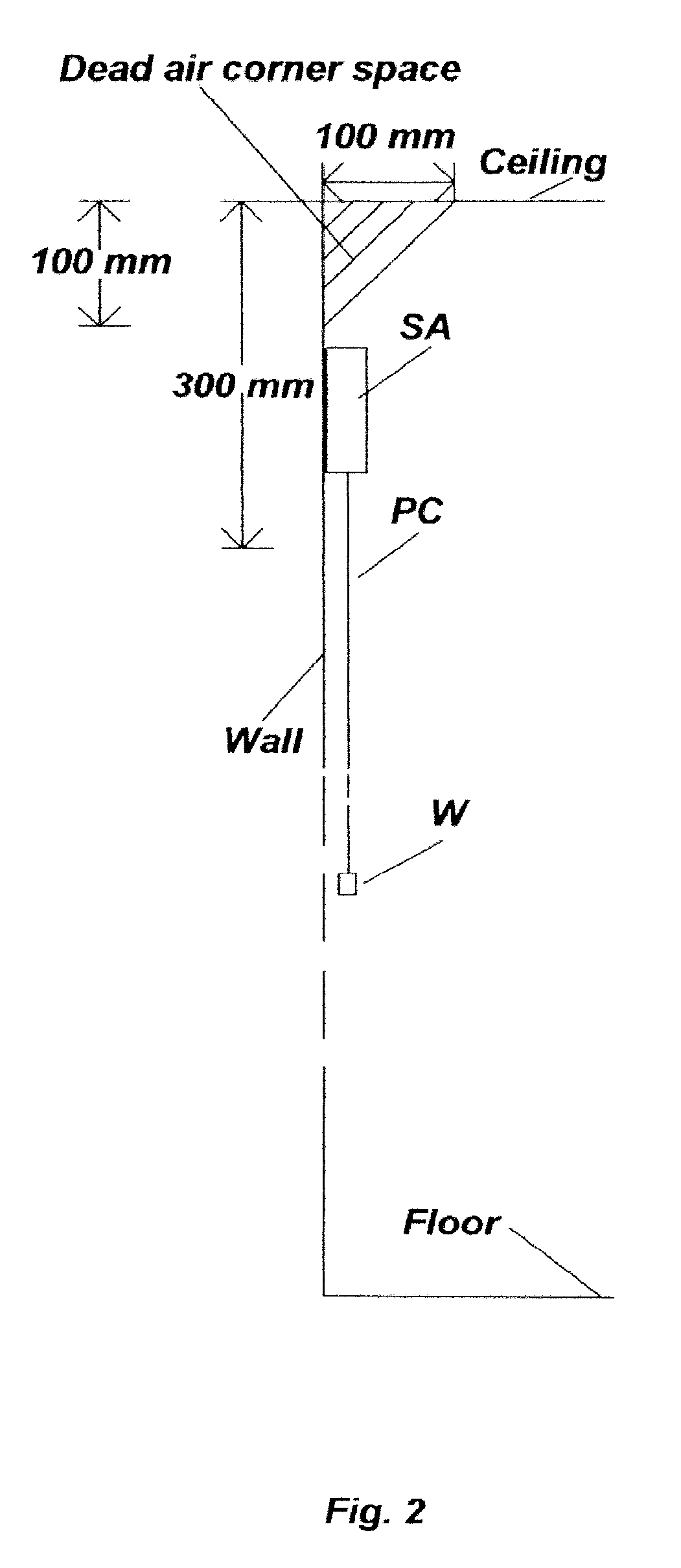It is well known that in many environments where hazardous condition alarm devices are installed the alarm devices are subjected to high rates of false or nuisance alarms as a result of non-hazardous activities generating products to which the alarm devices are responsive.
A
high incidence of false or nuisance alarms can discourage building occupants from using hazardous condition alarm devices to protect themselves, or for those who have been subjected to such incidents, the unsafe practice of disabling alarm devices by disconnecting them from their power supply sources is common and often results in occupants being left exposed and at risk.
Thus, the silencing facility of hazardous condition alarm devices has a positive
impact on life safety of occupants as it reduces the likelihood of alarm devices being disabled, and that of prospective users of alarm devices refraining from using such devices for their protection, as a result of the
high incidence of false or nuisance alarms.
Although the above mentioned operator functions are essential for the proper operation of hazardous condition alarm devices and / or are important to life safety, current
alarm device designs incorporating
operator function switches and batteries have the
disadvantage that access to these switches and batteries can be difficult when the alarm devices are mounted on or near the ceiling as recommended by manufacturers to ensure fast alarm device response.
This problem arises from the fact that for a large proportion of building occupants who are not tall, the height above the floor at which occupants can carry out the operator functions of hazardous condition alarm devices, mounted on or near the ceiling, is excessive resulting in the operator functions being inaccessible and inoperable by those occupants.
In many cases, the problem of the lack of access for carrying out operator functions results in building occupants becoming frustrated and simply disabling alarm devices by disconnecting them from their power supply sources leaving them exposed and at risk.
In other cases, building occupants resort to climbing on items of furniture, as a proper ladder is not always available, to operate
operator function switches or replace batteries of hazardous condition alarm devices and they do so at considerable risk of injury to themselves.
The problems associated with difficult access to
operator function switches and batteries of hazardous condition alarm devices installed on or near the ceiling are made worse if the building occupant is a person with a disability, for example somebody who is
wheelchair bound, or if the occupant is an elderly person, is frail, or is under the influence of
alcohol, drugs or medication when balance may be a problem.
It is to be noted that, in recognition of the above described
accessibility problems associated with operator function switches and batteries of hazardous condition alarm devices, some manufacturers offer solutions that, whilst solving the
accessibility problems previously identified, the solutions are themselves problematic and disadvantageous in many ways.
Although the FireAngel design provides access to the silencing and
manual testing operator functions of the
smoke alarm, the design is problematic as it allows the operator silencing and testing functions to be performed only when
mains electricity supply is available.
Furthermore, for safety reasons many codes and standards around the world do not allow
smoke alarms to be installed on switched electrical circuits as it is possible for these circuits to remain de-energised for very long periods.
The
disadvantage with the FireAngel design is that during these long periods when the electrical circuit is de-energised the
backup power source may completely be depleted to result in the
smoke alarm becoming inoperative.
This arrangement is not in accordance with most installation standards and manufacturer's recommendations that require smoke alarms to be kept away from light fittings as the heat released by light bulbs can interfere with the movement of smoke and the performance of the
smoke alarm.
A further disadvantage of the FireAngel design is that the smoke alarms must always be operated from mains supply and low cost single supply battery operated smoke alarms of this design are not possible.Some manufacturers of hazardous condition alarm devices offer remote alarm device testing and silencing switches that are connected to the alarm devices by
electrical wiring.
The disadvantage of remote mounted operator function switches of hazardous condition alarm devices is that it is not always possible to install wiring to wall mounted switches in existing buildings due to access problems.
Therefore, the installation of the remote wall mounted operator function switches is disadvantageous in that it is often expensive to carry out.
A further disadvantage of remotely wired operator function switches is that the hazardous condition alarm devices are no longer self-contained which, in at least the case of single supply battery operated hazardous condition alarm devices, would discourage installation by the vast majority of potential users of such alarm devices who are do-it-yourself type installers.The
remote control of the operator functions of hazardous condition alarm devices is now being offered by some manufacturers so as to overcome the
accessibility problems associated with the testing and silencing of alarm devices by building occupants.
A disadvantage of
remote control operator functions of hazardous condition alarm devices is that reliance is placed on an additional piece of powered equipment, the
torch or the
infrared transmitter, for carrying out the important functions of alarm device silencing and testing, equipment that may not be available when required if it is misplaced or lost.
Another disadvantage of
remote control operator functions of hazardous condition alarm devices is that the required
torch or
infrared transmitter is powered by batteries whose condition are not normally monitored, and therefore there is a real risk that the
torch or
transmitter fails to operate when required due to flat or missing batteries.
A further disadvantage of the remote control operator functions of hazardous condition alarm devices is that, in a building where a number of alarm devices may be installed, generally only one torch or
infrared transmitter will be available.
With such an arrangement, and in the event of a false or nuisance alarm that requires the silencing of one particular alarm device, the torch or transmitter may be quite remote from the alarm device to be silenced and therefore inconvenient long delays before silencing are possible.
 Login to View More
Login to View More  Login to View More
Login to View More 


